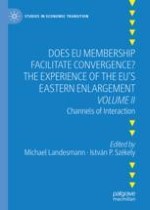2021 | OriginalPaper | Chapter
9. Corruption, Institutions and Convergence
Empirical Analysis of Public Tenders of the Old and New EU Member States
Authors : István János Tóth, Miklós Hajdu
Published in: Does EU Membership Facilitate Convergence? The Experience of the EU's Eastern Enlargement - Volume II
Publisher: Springer International Publishing
Activate our intelligent search to find suitable subject content or patents.
Select sections of text to find matching patents with Artificial Intelligence. powered by
Select sections of text to find additional relevant content using AI-assisted search. powered by
